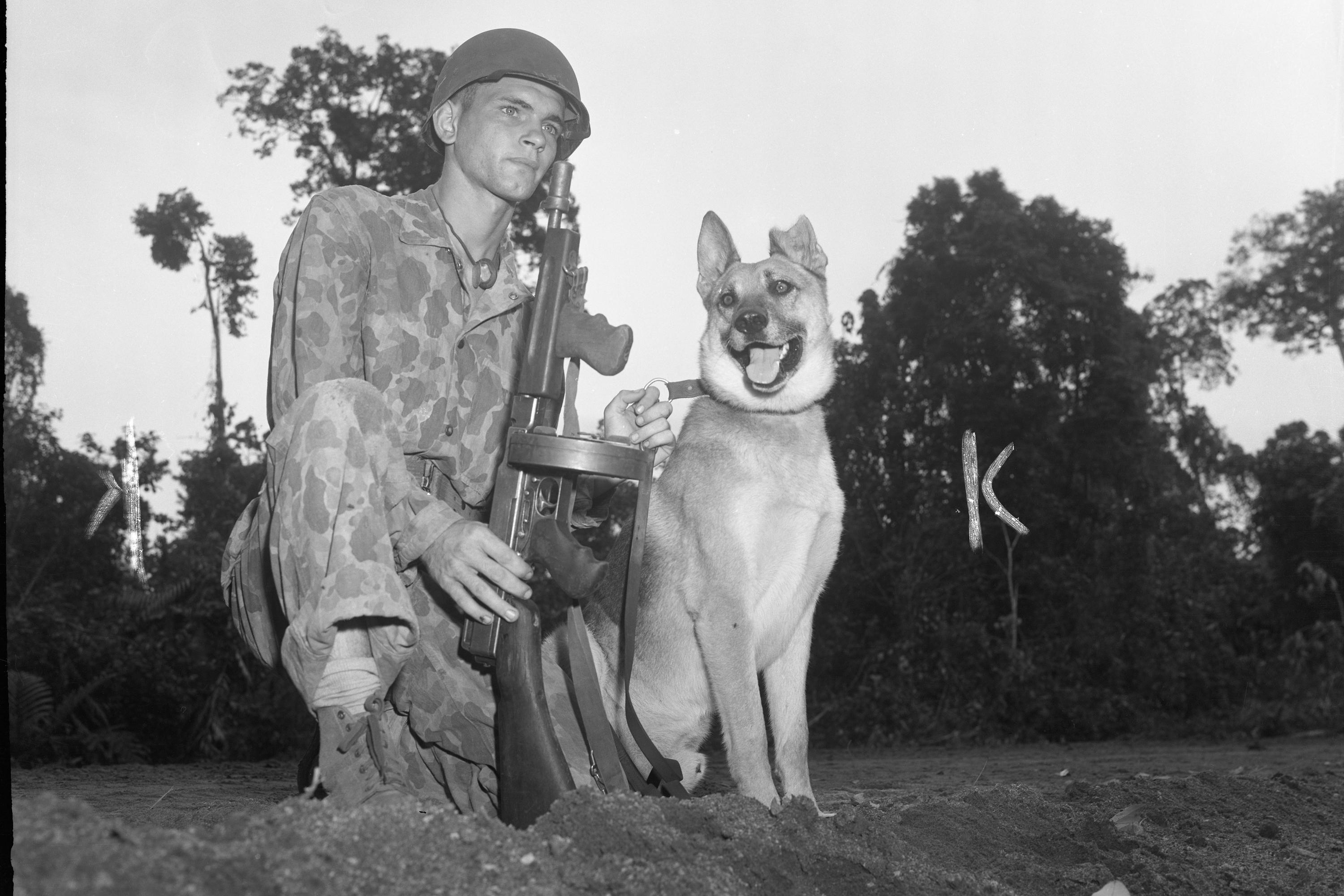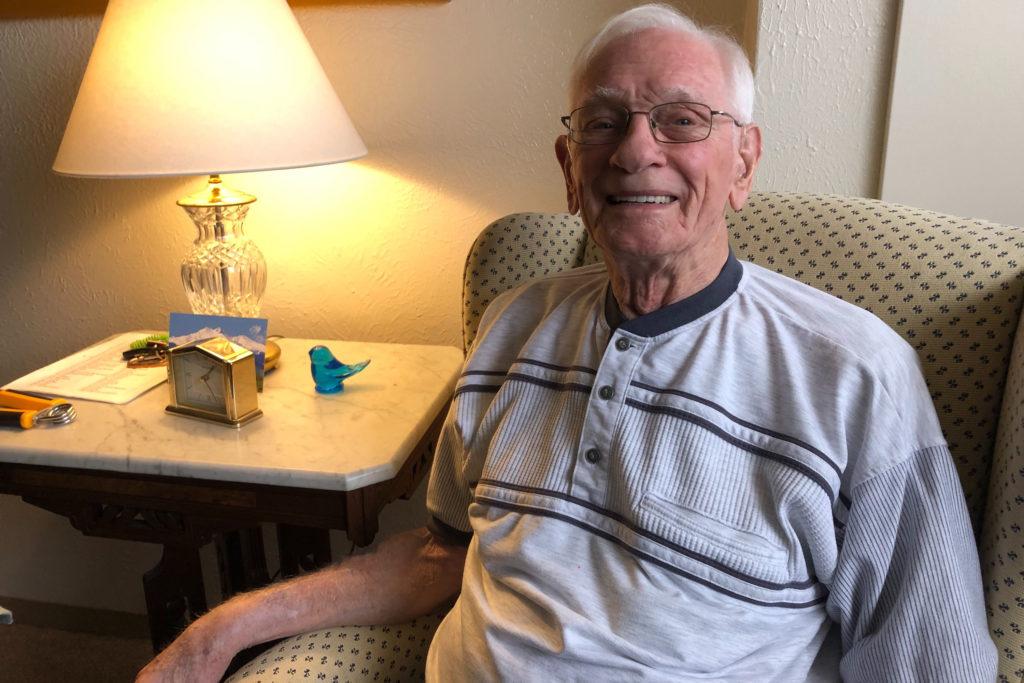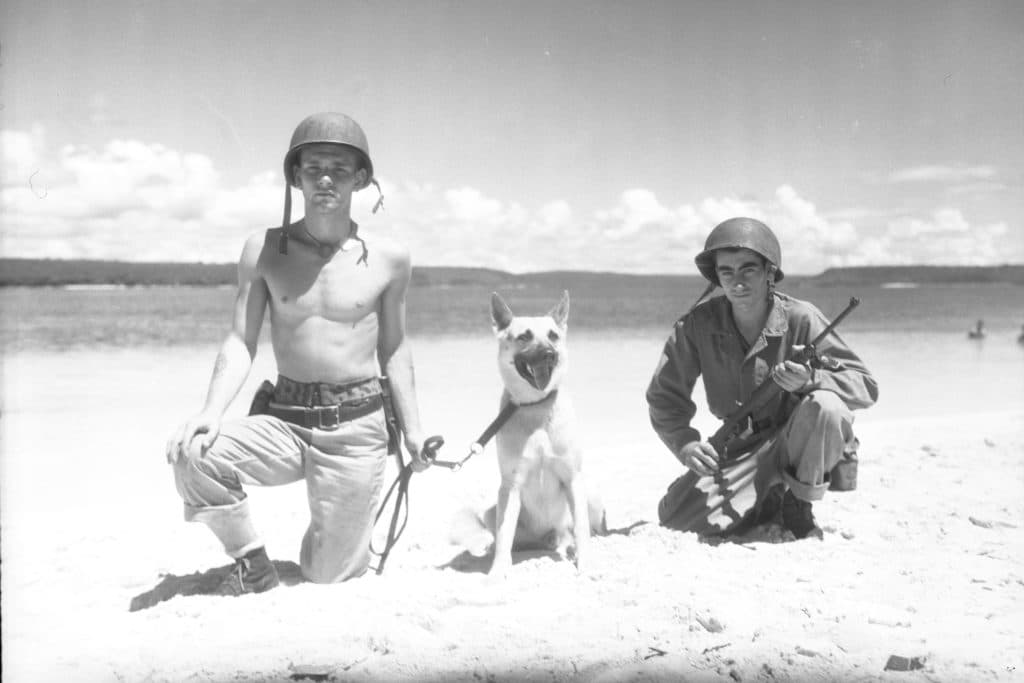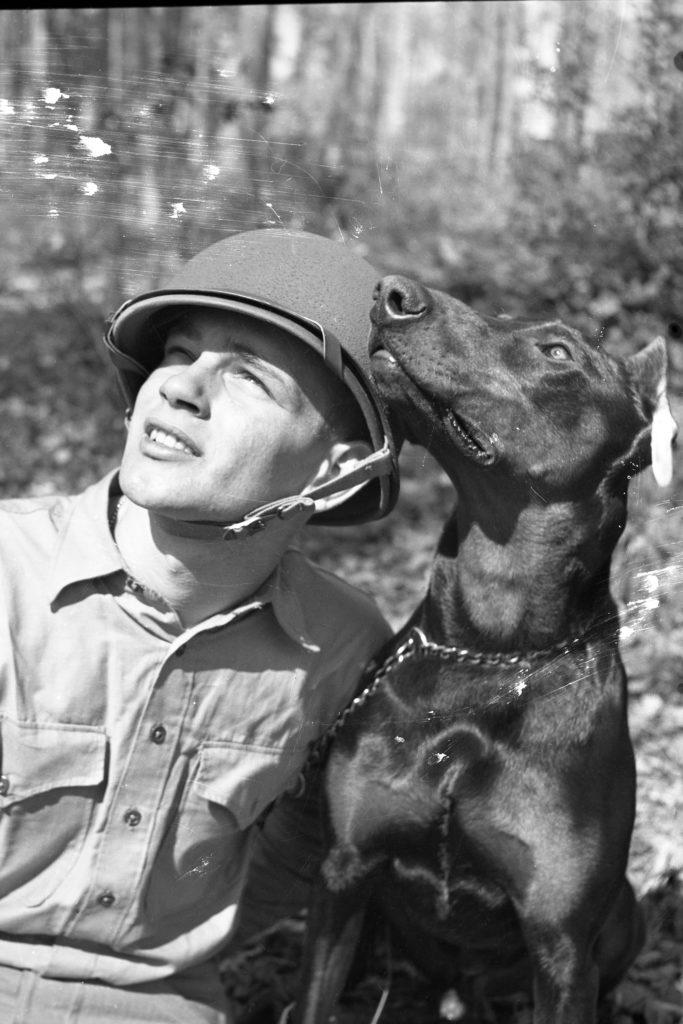
It was World War II. Homer Finley was 17, a new and very homesick Marine recruit in Florida, when he was offered a job and a transfer.
The Corps was creating its first war dog platoon, headquartered in Virginia. They needed human handlers.
Finley liked dogs, and figured Virginia was closer to his family home in New York state. He signed on.
The dogs were mostly household pets, donated by civilian families who wanted to help with the war effort. Finley and the other platoon members worked every day with the animals, feeding them, cleaning up after them, teaching them basics like “sit” and “stay” and then moving on to more complicated lessons.

"We trained them to ignore gunfire because when you're in combat it's always big and noisy — shooting and yelling. And they did their jobs beautifully,'' Finley recalled in a recent interview. He's now 94 and lives in Longmont.
The dogs were divided by task. Doberman pinschers were scout and attack dogs. Finley worked with shepherds who served as messenger dogs.
"We had three messengers. There was Thor, Jack and Caesar, and each dog had two handlers,'' he said.
The dogs were fitted with collars that could hold pieces of paper with messages. One handler stayed at the command post, while the other was with a field unit as the dog carried communications in between. The note might be a request from the field for ammunition, or instructions from commanders to their fighting Marines.

Before long, Finley's unit and the dogs found themselves as part of an invasion force at the island of Bougainville near Papua New Guinea in the South Pacific.
"There's no doubt the dogs saved lives," he said.
Not only did they keep human messengers out of the line of fire, they alerted their handlers if the enemy was near.
“Especially at night in a foxhole, a dog’s a pretty nice companion, because if anybody starts stirring around they’re going to know it,’’ Finley said. “And when you go into combat, you’re sleeping with them and you’re living with them and you’re feeding them and you really fall in love with that dog.”

The handler-dog teams often shifted as Marines or their animals were injured.
”It was sad,” Finley said. ”I think Caesar was the first one to get wounded. He finished his message run even though he’d been shot. They brought him to an aid station on a stretcher and he revived and did more. In fact, I think he went beyond Bougainville.”
Finley eventually left the dog platoon and was assigned to another combat unit. He was injured on Guam and returned to the United States to finish out his service. The dogs came back to the states, too. They went to Camp Lejeune in North Carolina to be “retrained,’’ if possible, for return to the families who had donated them.
At the end of the war, Finley went to Lejeune, walked by the kennels and immediately recognized Jack, one of the dogs he’d been with at Bougainville.
“I told the guy that was showing me around ‘There’s a dog I had over in Bougainville,’ and he said ‘Well, he’s pretty vicious, so you better be careful,’” he said.
Finley was convinced Jack wouldn’t hurt him.
“This kind of tears me up when I think about it,” he said. “I did step into the gate, into the run where the dog was. He knew me right away, put his paws up on my shoulders, started licking my face. It was like a family reunion, you know?”









